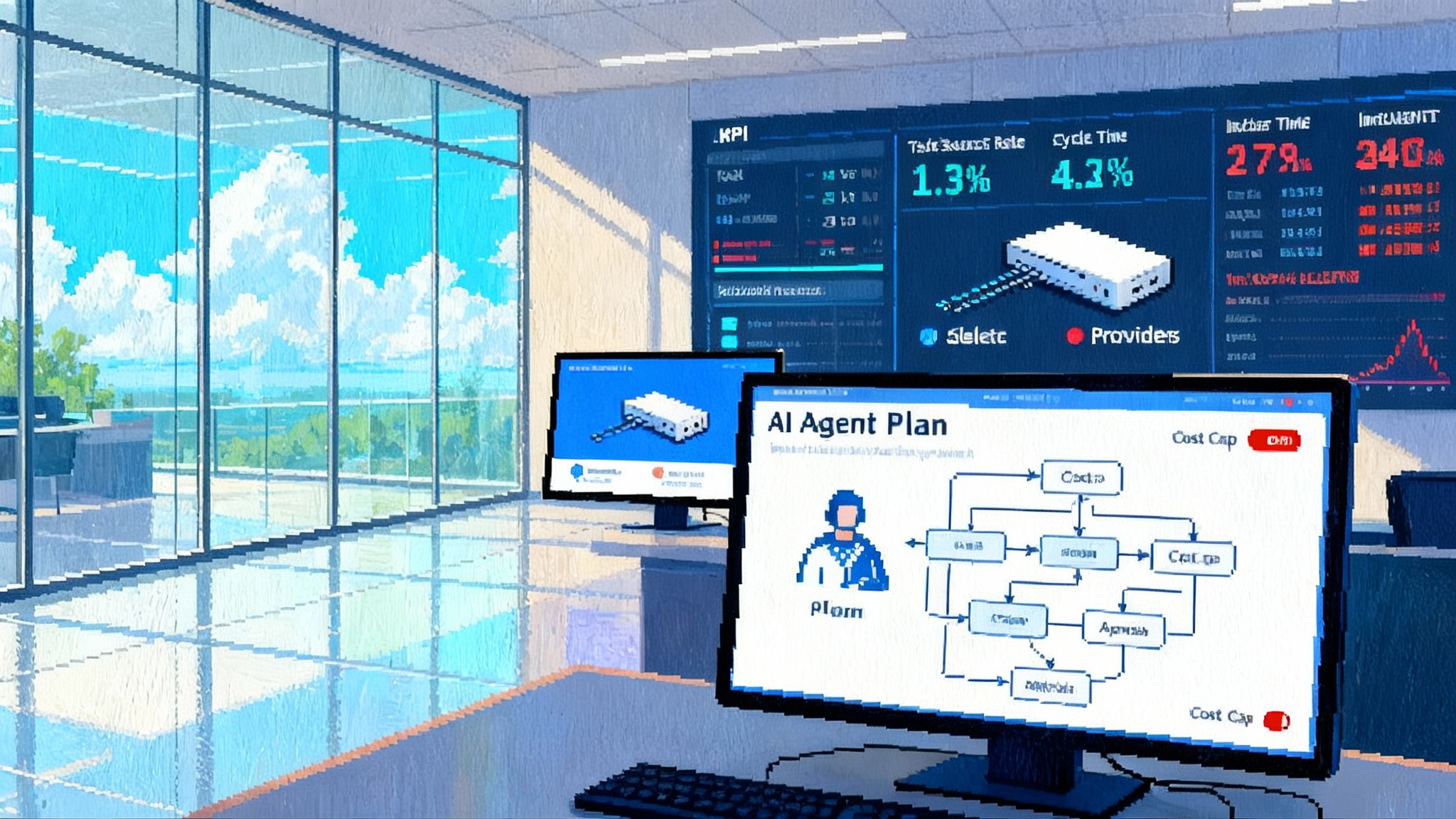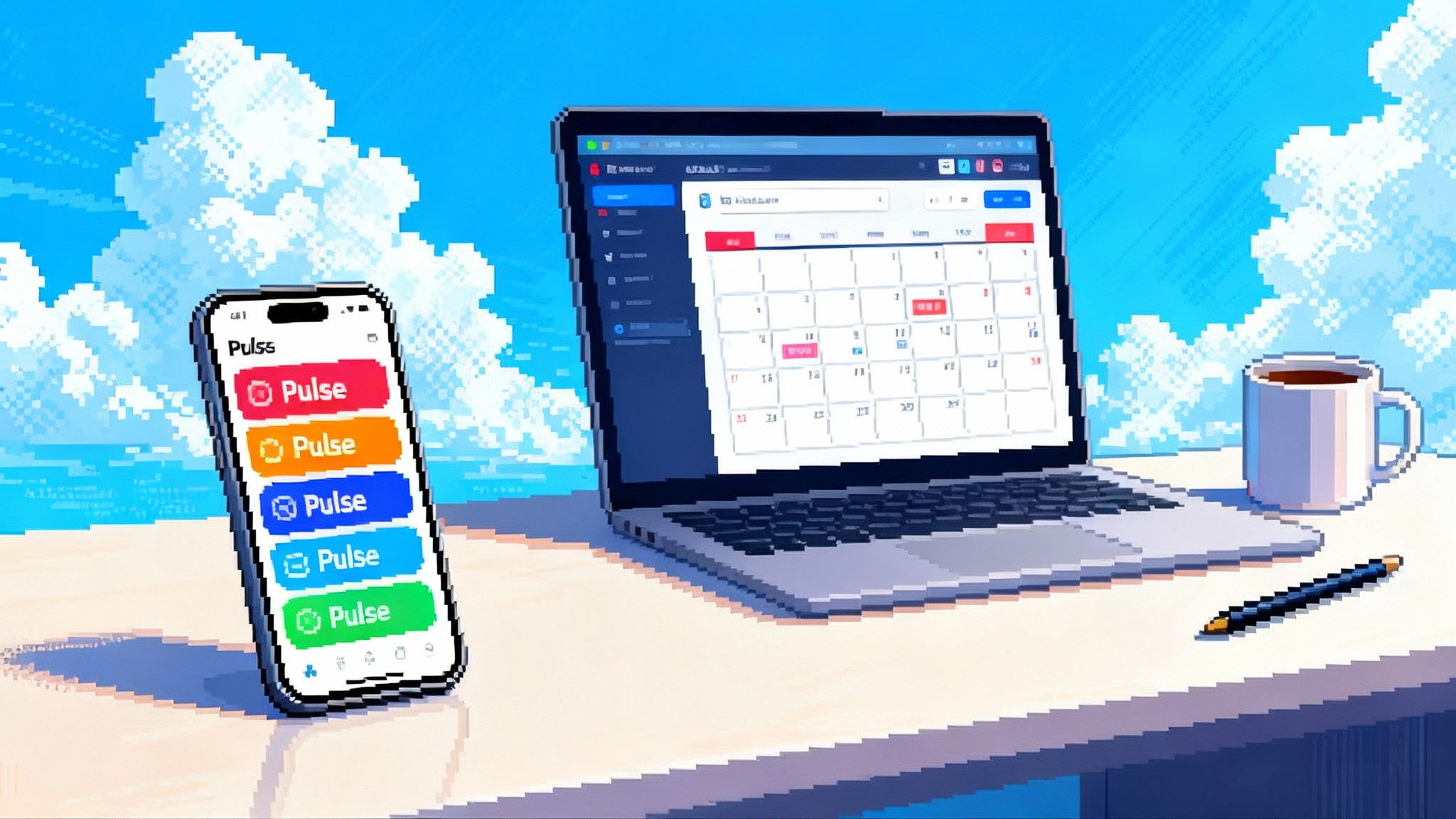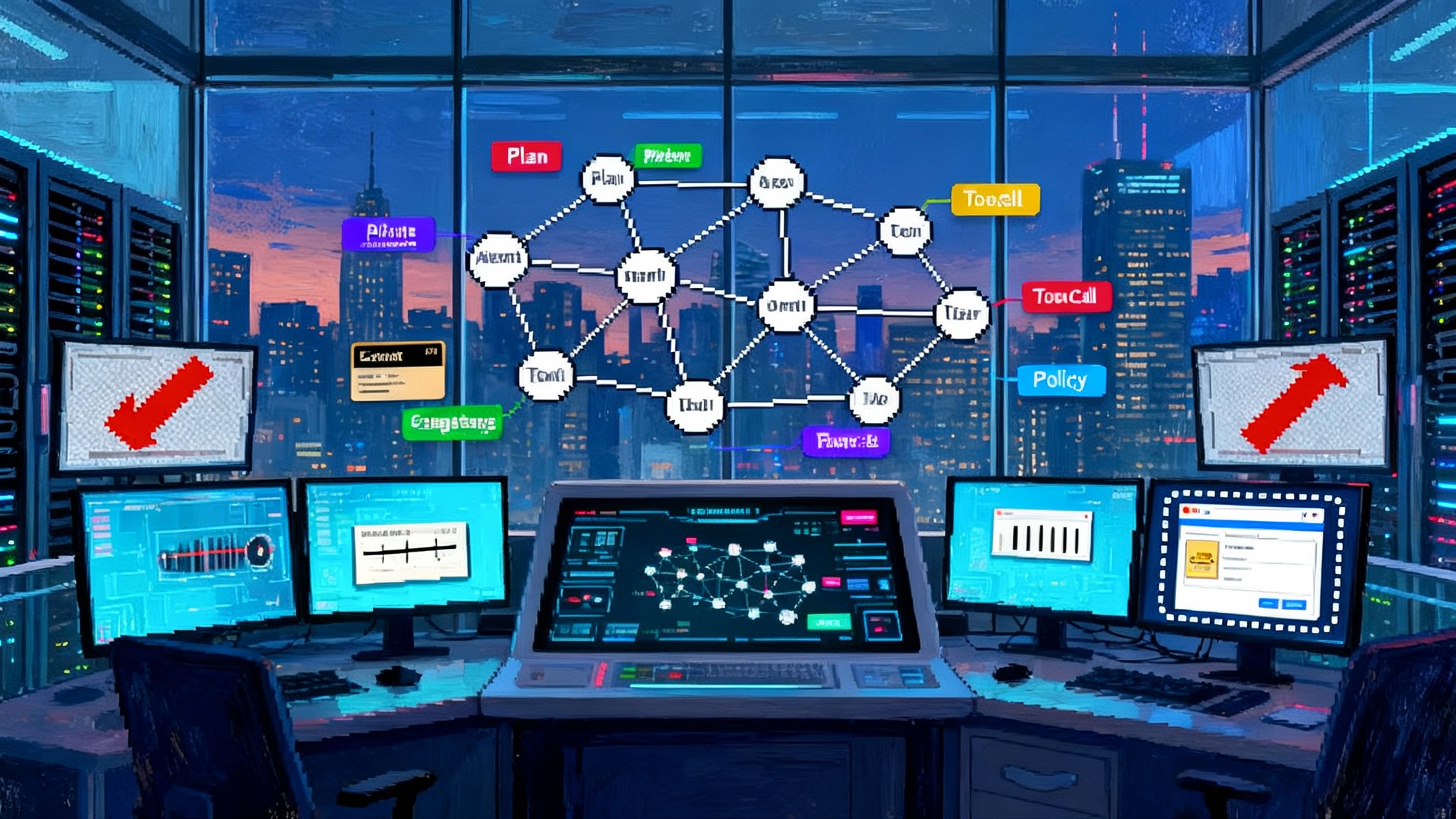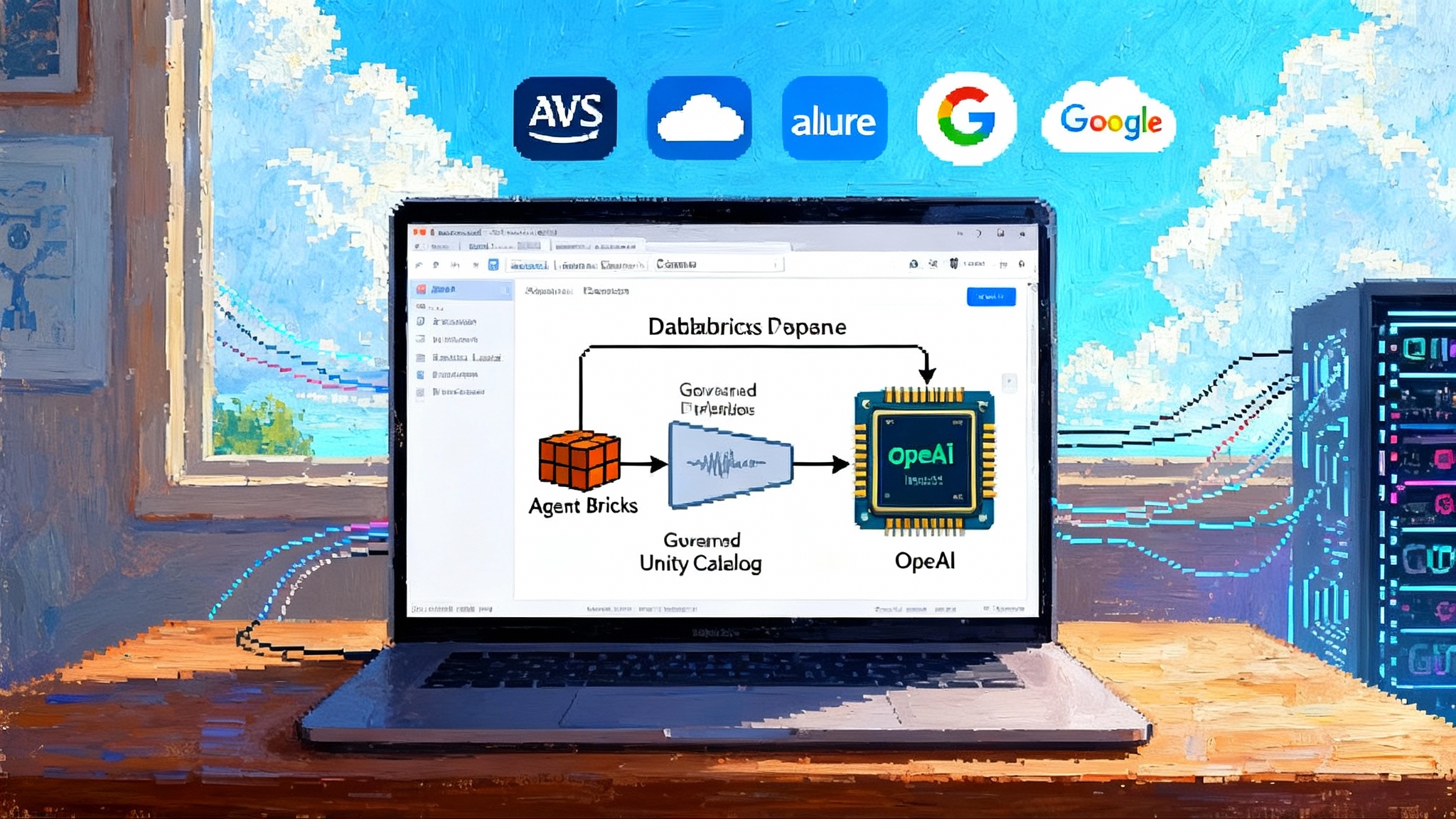Apple quietly lays MCP rails in iOS 26.1 and macOS 26.1
Code in the September 22-23 developer betas points to system-level support for Anthropic’s Model Context Protocol inside App Intents. Here is how that could unlock secure cross-app agents on iPhone and Mac and what developers should do now.

The quiet change in the 26.1 betas
Sometimes the most important platform shifts arrive as small symbols in a diffs window. That appears to be the case with the September 22-23 developer betas for iOS 26.1 and macOS 26.1. Reverse engineered strings and new hooks indicate Apple is laying foundational support for Model Context Protocol (MCP), wired through App Intents. Early reporting points to scaffolding rather than a public API, but the direction is clear enough to pay attention to now. If it ships, third party agents like ChatGPT and Claude could securely call app actions on your iPhone and Mac through a common protocol, mediated by the OS. 9to5Mac’s beta analysis captured the first signs in the code.
If you work on an app that exposes App Intents, this is not a future to watch from the sidelines. It is a new distribution channel for your app’s capabilities, one that could be as meaningful as the original Shortcuts integration. For a broader view on why action taking matters, see our perspective on designing agents that act.
MCP, in plain English
MCP is an open standard that gives AI models a consistent way to reach out to tools, data sources, and applications. You can think of it as a bridge between a model and the outside world. Instead of bespoke adapters for each tool, MCP presents a uniform contract. A server advertises resources, tools, and prompts; a client model can discover those capabilities, request structured operations, and receive typed results over JSON RPC.
Here is why that matters for agents that need to act on device:
- Discovery is standardized. An agent can learn what an app can do without custom glue per app.
- Invocation is typed. The agent calls a specific capability with structured parameters rather than free text.
- Context is first class. The agent can request only the data and scopes it needs, which enables permissioning and logging. For how longer contexts change planning, see our take on the 1M token context race.
- Transport is model agnostic. Any model that speaks MCP can in principle use the same tool surface.
If Apple adopts MCP as a system level shim inside App Intents, developers can keep building the native way while agents get a common language to call those intents.
App Intents as the bridge to native actions
App Intents is Apple’s framework for exposing app actions and entities to the system. It already powers Siri suggestions, Spotlight, Shortcuts, widgets, controls, and in recent releases has hooked into Apple Intelligence for action suggestions. The betas suggest Apple is preparing to map those intents to an MCP surface. If so, here is what a typical path might look like when an agent wants to act across apps:
- Capability discovery. The agent queries the OS for MCP exposed capabilities. The OS returns a filtered catalog of intents from installed apps, organized by domains like messaging, scheduling, files, media, commerce.
- Consent and scoping. The user approves a one time or session scoped permission for the agent to call specific intents with defined parameters. Sensitive scopes require explicit confirmation.
- Invocation. The agent issues a typed call over the MCP channel. The OS translates the call into an App Intent invocation for the target app, with identity, scope, and rate limits enforced by the system.
- User presence checks. For high risk intents the OS presents a confirm sheet that names the agent, the app, parameters, and effects. For routine intents the OS may rely on pre granted scopes.
- Result marshaling. The app returns a result value. The OS normalizes it into an MCP response with well defined types, structured errors, and hints for follow up actions.
- Audit and revocation. The system logs the call, parameters, and outcome. The user can revoke agent scopes at any time.
The key is that the OS stays in the loop. Apps do not need to implement MCP servers themselves. They implement App Intents. Apple provides the MCP façade and the policy enforcement at the platform layer. That lowers adoption friction for developers and centralizes security.
Why this is a watershed for privacy preserving agents
Agents need to do things. The debate has never been about whether models can write a sentence. It is about whether they should send a message, move money, or edit your calendar safely and privately. Apple’s answer is a two tier architecture that keeps as much as possible on device and uses Private Cloud Compute for tasks that require larger models. Private Cloud Compute is a server environment with Apple silicon, attestation, and a transparency mechanism so third party researchers can verify that only the intended code is running and that your data is not retained. Apple’s framing is simple. Send only the minimal data needed, never store it, and make it verifiable. Apple laid out that security model at WWDC 2024 and in subsequent updates on its newsroom. See Apple’s overview of Private Cloud Compute for the core guarantees and architecture. Private Cloud Compute extends iPhone grade privacy.
If you pair MCP at the system layer with Private Cloud Compute and on device models, you get a credible path to cross app agents that are private by default. The OS mediates capabilities. The user approves scopes in human terms. On device models handle routine planning. Larger tasks escalate to Private Cloud Compute with attestation. The result is an agent stack where the risky bits are contained and inspectable.
MCP vs A2A vs AP2, and where Apple fits
There is a broader standards race for how agents discover, communicate, and transact. Three acronyms keep coming up:
- MCP. Tool and data access for models. It describes how a model calls into a capability surface, reads resources, and writes results. It is the adapter that turns an app’s actions into something a model can reliably use.
- A2A. Agent to Agent protocol. It focuses on agent collaboration rather than tool access. Think capability cards, negotiation, and task handoff between agents from different vendors and stacks.
- AP2. Agent Payments Protocol. A payment and authorization layer designed to let agents conduct transactions with verifiable mandates and clear roles across issuers, merchants, and wallets. AP2 often builds on A2A for messaging and can reference MCP surfaces when a payment flow needs data or actions from tools. For background on commerce, see our primer on the AP2 and paying agents era.
If Apple lands MCP at the system boundary of App Intents, it will not compete with A2A or AP2 so much as complement them. An external agent could coordinate with other agents using A2A, then use AP2 to get a user signed payment mandate, then call into your app’s App Intent via MCP to fetch a cart, apply a coupon, and place an order. Apple’s role is to keep that last step safe and private on device, with human readable permissions and local enforcement.
Risks, permissions, and governance
Putting cross app action behind a common protocol raises predictable risks. The platform needs thoughtful defaults and developer guardrails. Our research on agent hijacking is the gating risk outlines why identity, scopes, and audit trails matter.
- Consent fatigue. If every action triggers a modal, users will grant too much or disable agents altogether. The fix is scope bundles with graduated trust. For example, allow read only calendar access for an hour without prompts, but require a confirm for create or delete.
- Scope creep. An agent should not escalate from read to write silently. The OS should render scopes in plain language and show per capability toggles. Scopes should expire by default.
- Over broad intents. Developers sometimes expose one mega intent that can do many things. MCP mapping will need typed parameters and risk labels so the OS can tailor prompts to sensitivity.
- Replay and misuse. Every MCP call should carry a nonce, a per agent token, and a user session binding that cannot be replayed out of context.
- Supply chain and spoofing. Agents should be signed identities, not just TLS endpoints. The OS should display the verified agent name and icon at confirmation time.
- Logging and transparency. Users need a chronological log of agent activity. Think Screen Time for agents. Show who called what, when, with which parameters, and what happened.
- Safe defaults for background work. Background execution must be quota limited. Long running tasks should surface a live activity with a Stop button.
- Child safety and compliance. Family controls should apply to agent scopes. Enterprise MDM should be able to disable or restrict MCP access.
Governance will start with platform policy. Apple already enforces entitlements and review for sensitive APIs. Expect a new entitlement for apps that expose high risk intents through MCP, documented risk categories, testable prompts, and store review checks. The review process could require demo videos for dangerous actions, similar to how CarPlay and HealthKit have extra scrutiny.
Developer checklist to get your app MCP ready
You can make progress today even before Apple documents anything publicly. The work you do to clean up App Intents will pay off regardless, and it positions you for day one adoption if MCP goes live.
- Audit your App Intents. Inventory every intent, its parameters, and its side effects. Consolidate duplicates. Split over broad intents into smaller, typed actions with clear names and descriptions.
- Add explicit risk labels. For each intent, classify read, write, or destructive. Mark intents that affect money, messages, files, or privacy critical data. Prepare short, user facing purpose strings.
- Tighten parameter types. Use App Entity types, enums, and value constraints. Avoid free form text where not needed. Typed parameters map cleanly to MCP schemas.
- Define idempotency and validation. Make sure repeat calls do not cause duplicate side effects. Return structured error codes for validation failures so agents can recover.
- Provide dry run modes where possible. A preview or estimate response lets an agent show a user confirmation before a commit.
- Implement good defaults. Safe parameter defaults reduce prompt friction. Example: new calendar events start as tentative, not confirmed.
- Prepare for scope prompts. Write consent copy that reads well on a confirm sheet. Avoid jargon. Explain what the app will do and what it will never do.
- Add result metadata. Return machine readable summaries, links to local records, and follow up hints. Agents can chain work more reliably when results are structured.
- Log with privacy in mind. Keep a local, user visible activity log with timestamps, the calling agent name if available, intent names, and outcomes. Redact sensitive values.
- Test with Shortcuts and Siri. Use today’s system surfaces to stress your intents. If they read well to Siri and behave in Shortcuts, they will likely map well to MCP.
- Harden background execution. Ensure long running intents can report progress, support cancellation, and respect battery and network constraints.
- Plan for enterprise controls. If your app is used in companies, add MDM keys to disable or restrict MCP exposure of specific intents.
Rollout scenarios through 2026
This is a forecast based on the current code hints and how Apple typically ships foundational features.
- Late 2025. Apple continues to flesh out the MCP façade in iOS 26.1 and macOS 26.1 developer seeds. Internal dogfooding with a small set of Apple apps. No public API yet. Third party developers start to see clearer symbols and headers.
- Winter 2025 to Spring 2026. Apple may open a private preview under NDA to selected partners. Expect a call for feedback on mapping patterns, consent flows, and logging.
- WWDC 2026. Public documentation of MCP bridging for App Intents. A new entitlement for sensitive intent exposure. Xcode templates for MCP aware intents, TestFlight flags for agent testing, and sample apps that show consent sheets and logs.
- iOS 27 and macOS 27 cycle. Broader rollout with initial system agents and a curated set of third party agents that meet policy. Early AP2 integrations appear for commerce flows, especially in markets with strong issuer partnerships.
- 2026 Holiday. Consumer features that feel mainstream, like an agent that can coordinate a dinner plan by checking your calendar, messaging friends, and placing a reservation, all with on device confirmation and logs.
It is also possible that MCP ships quietly as an implementation detail at first, with only Apple’s own agents calling the bridge. Third party access could follow later once policy and tooling are solid.
What success looks like for users
- Clear prompts. Users see who is asking, what will happen, and why the agent needs the permission. They can grant a narrow scope or say no.
- Quiet productivity. Routine actions run without friction inside the scopes the user approved. Sensitive actions ask clearly for permission.
- Complete control. There is a dashboard to revoke scopes, pause an agent, or delete its activity log.
- No data leaks. On device by default, Private Cloud Compute for heavy lifting, and public attestation so experts can verify claims.
What success looks like for developers
- One surface to maintain. You keep building App Intents. The OS maps them to MCP for agents.
- Better discovery. Agents can find your capabilities predictably and route users into your app for deeper flows.
- Higher trust. Platform standard prompts and logs reduce security questions and review stalls.
The bottom line
The betas hint at a pragmatic synthesis. Apple does not need to invent a new agent protocol. It can take the tool layer that is gaining momentum, bind it to the App Intents surface that millions of users already touch, and surround it with the privacy architecture it has built over the last decade. If the MCP bridge fully arrives, the agent era on iPhone and Mac will feel native, safe, and practical. That is exactly the kind of change that starts as a small symbol in a diff and ends up changing how we use our devices every day.








